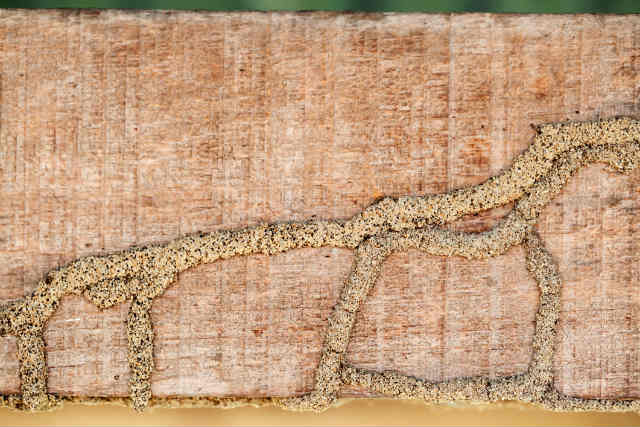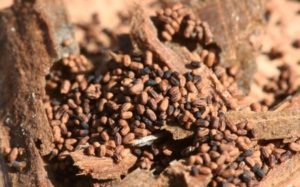A termite inspection is when a professional inspector visits a building to look for evidence of termites.
The inspector will look at the entire structure and as well as the exterior of the property.
Preparing your home beforehand ensures that the inspection goes smoothly.
In this article, we’ll review everything you need to know about termite inspections and how to best prepare for them.
How Much Does a Termite Inspection Cost?
Termite inspections generally cost around $50 to $150
Some companies may charge you based on the size of your home. The cost of larger homes can reach up to $250.
In some cases, termite companies will offer you free inspections to earn your business.
How Long Does an Inspection Take?
Termite inspections generally last about 30 minutes to an hour, depending on the size of the property.
It may also take longer if the home has a lot of clutter.
Inspections can also take longer if you have a large or difficult to access crawl space or attics.
How To Prepare for a Termite Inspection?
1. Remove Any Materials Under your Kitchen and Bathroom Sinks.
Termites need moisture to survive.
Inspectors will need to go through all areas that are close to water, such as sinks and drains.
2. Make sure that no items are touching your exterior walls.
Move any item against your exterior walls.
You’ll also want to trim any bushes, vines, and tree branches touching the walls.
Doing so will make it easier for your inspector to check if any Subterranean termites are tunneling through these walls and creating mud tubes.
3. Organize Your Attic and Garage.
Remove any clutter in your garage and attic.
Move your stuff away from the walls to make it easier for the inspector to see any signs of infestation.
Ensure there’s enough room for the inspector to get close to the walls and move around the room.
Make sure to move anything that’s blocking the entrance to your attic so the inspector will have easy access to it.
4. Clear Your Crawlspace
Make sure your crawlspace is easily accessible by the inspectors.
If you are storing anything in your crawlspace or if the entry to theh crawlspace is blocked, be sure to clear them out of the way beforehand.
5. Avoid Excess Moisture
Termite inspectors use moisture meters to determine if your home is made susceptible to termites by high humidity.
For accurate results, refrain from doing anything that creates excess moisture.
Avoid leaving bathroom floors wet, turning on the steam shower with windows closed, and using powerful humidifiers.
6. Take Notes
If you have seen any signs of termite damage or infestation such as termite droppings, hollow wood, and mud-tubes, take notes and tell your inspector.
What Does A Termite Inspector Look For During Inspection?
A termite inspector will look for signs of termites infestations and damage in the property.
Some signs of termites infestation include:
- Flying Termites Or Swarmers
- Discarded Termite Wings

- Dead Alates
- Mud Tubes

- Termite Pellets/ Grass or Droppings

- Patches
- Hollow Wood
- Noises In Your Walls
- Bubbling Paint

- Damaged Wood

- Hard To Open Doors And Windows
- Termite Cement
- Termite exit holes
Resource: Top 13 Signs You Have Termites
An inspector will also look for any areas or items in your property that are vulnerable to termite infestation.
Items that are vulnerable to termites are:
- Rotting wood
- Clogged gutters
- Poor drainage
- Wood-to-soil contact
- Damaged walls and floors
- High humidity in crawl space or attics
- Unkempt landscapes
- Mulch
- Exposed or unfinished wood
Resource: What Attracts Termites To Your Home?
What Areas Do Termites Inspectors Check During Inspection?
Termite inspectors check areas that are easy for termites to penetrate and are ideal for them to nest in.
The inspector would pay particular attention to your bathroom, kitchens, and utility rooms.
Some areas that are commonly infested by termites are:
- Baseboards
- Walls
- Windows and window sills
- Doors and door sills
- Insides of cabinets and closets
- Crawl spaces
- Door frames
- Attic
- Staircases
- Under sinks
- Floorboards
- Basement
- House foundation wall (where floor and wall meet)
- Garage
Outside your home, the inspector will look at:
- Exterior walls
- Eaves of the house
- Outdoor sheds
- Side Paneling
- Gutters
- Rooftop panels and shingles
- Trees and gardens around your home
- Fences
- Staircases
- Fuse boxes and meters set into walls
- Wooden materials around swimming pools
- Crawlspace
After Termite Inspection What’s Next?
The next steps after your inspection will vary on your results.
For minor infestations, termite inspectors will generally recommend localized or spot treatments.
If your infestation is large, a whole structure treatment and comprehensive treatment plan are generally recommended.
The specific method to eliminate termite infestations will depend on the type of termite you have.
Subterranean termites will generally require localized and soil treatment.
Drywood termites, on the other hand, generally require heat or fumigation.
If you have no termites in your home, your inspector may recommend preventative measures against termites.
Preventative treatments can include soil treatment, bait traps, or wood injections.
What is a Termite Inspection Report?
The termite inspection report is another name for wood-destroying organism report.
It’s a document made by a Pest Control Operator about a home’s treatment history, current infestation, damage, and recommended treatments.
The report also includes information on issues that can lead to a termite infestation in the future.
Home buyers and lenders rely on termite inspection reports to protect them from investing in a termite-infested property.
When Should You Get a Termite Inspection?
You Live In a High-Risk Area.
If you live in a high-risk area getting regular termite inspections is a great way to protect your home from termite damage.
Having yearly termite inspections will help you catch the infestation early before any serious damage is done.
Termite inspections in a high-risk area are especially important since termite damage is not covered by home insurance.
Here is a map of where termites are more common in the U.S:

Before you Buy or Sell a Home
If you are buying a home, your mortgage lender may require a termite inspection for loan approval.
A termite report protects you and your lender from investing in a termite-infested property.
It is also a good idea to have a termite inspection done before you sell a home.
Having a termite inspection report before selling your home can help you expedite the sale.
There may also be laws placed in your area that require that you do a termites inspection before selling a home.
For example, high-risk states like California mandates a termite inspection to be completed before a home can be sold.
You Suspect Termites In Your Home
If you suspect you have termites, I highly recommend getting a professional’s opinion.
Termites are hard to spot and often go unnoticed for years.
It’s not uncommon that by the time you realize you have an infestation, the termites have already been causing damage in your home for years.
Having a professional inspect your home can help you correctly determine the severity of termite infestation and damage.
Inspectors will also help you determine the appropriate steps forward.
You’ve Had Termites in The Past.
If you have had termites in the past, having an annual or bi-annual termite inspection is a vital preventative step.
Termite inspections will ensure that any previous treatment was effective and that the infestation has not returned.
Resource: What are Termite Bonds and should you buy one?
How To Prevent Termites?
- Properly Store your Firewood
Termites thrive on firewood, so make sure to keep them at least 20 feet from your home.
It’s also a good idea to keep firewood a few inches off the ground.
- Bug Screens
Install bug screens over attic vents to prevent entry.
- Ventilate Properly
Termites need a water source to survive. And they flourish in damp and moist areas.
Ventilate your home to prevent them from becoming too humid.
- Replace All Damaged or Rotting Wood.
Remove all damaged wood. Make sure to replace it with wood that’s treated with pesticides.
- Maintain Landscape
Remove all plants and mulch away from the foundation of your home.
- Apply fresh Paint
Chipped paint and small holes allow termites to penetrate wood easily, so make sure to seal them.
- Eliminate Excess Moisture
To prevent termites, make sure to keep moisture away from your home with proper drainage systems.
Resource: 16 Termite Prevention Tips
